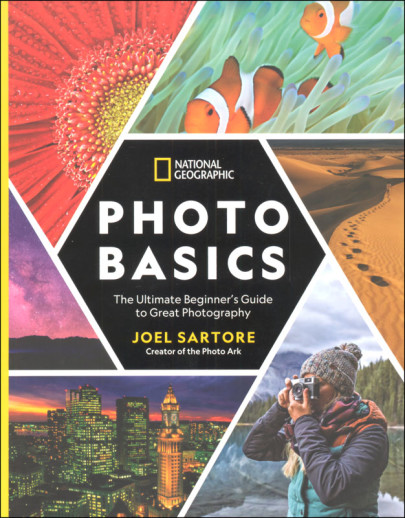We use cookies to make your experience better. To comply with the new e-Privacy directive, we need to ask for your consent to set the cookies. Learn more.
National Geographic Photo Basics
A great guidebook for any amateur photographer, this illustrated instruction guide gives an overview of the basics and fundamentals of pf photography. Starting at the very beginning, this resource gives examples of different types of cameras, lenses, focal lengths, camera settings, and equipment commonly used by photographers. The book then dives a bit deeper into photo composition, lighting, mood, shutter speed, and much more. The information in this book is illustrated with beautiful and vivid photographs by the author Joel Sartore.
Whether you enjoy photography, you've always wanted to learn about photography, or you just enjoy learning new things, this book can take you from the ground up in basic photo taking. The topics are divided into manageable sections and are well explained. Although having a digital camera with interchangeable lenses would help learners apply the lessons to the full extent, even a smartphone photographer could apply many of these concepts to their work.
Many of the things I learned in college are highlighted in this beginner's guide. This is not a guide for how to use a camera, but rather, how to take pictures from a photographer's perspective. Makes an excellent self-teaching course for inspired students and adults. 254 pgs, pb. ~ Brianna
For digital camera and smartphone users, this easy how-to guide, written by an experienced National Geographic photographer, imparts the essentials of taking great pictures. This entertaining book from beloved National Geographic photographer and Photo Ark founder Joel Sartore shows aspiring photographers how to take great pictures, from framing and F-stops to editing and archiving. Whether you're using your phone or a DSLR camera, you'll learn the fundamentals of photography--and how to put them to work every day.
In a series of short lessons, Sartore explains the basics, from choosing a camera and gear to understanding focus, exposure, composition, and lighting. Using examples from his own work, he applies the basic rules of photography to family, pet, travel, nature, and street photos, and how to get a great shot with the camera on your smartphone.
Throughout the book you'll find pro tips, quick assignments, and the behind-the-camera stories of great photographs; helpful notes clarify how to use every piece of advice with your smartphone camera.
Fun and informative, this practical book will be your gateway to taking great pictures.
| Product Format: | Paperback |
|---|---|
| Brand: | National Geographic |
| Grades: | 7-AD |
| ISBN: | 9781426219702 |
| Length in Inches: | 9.75 |
| Width in Inches: | 7.625 |
| Height in Inches: | 0.75 |
| Weight in Pounds: | 1.95 |

